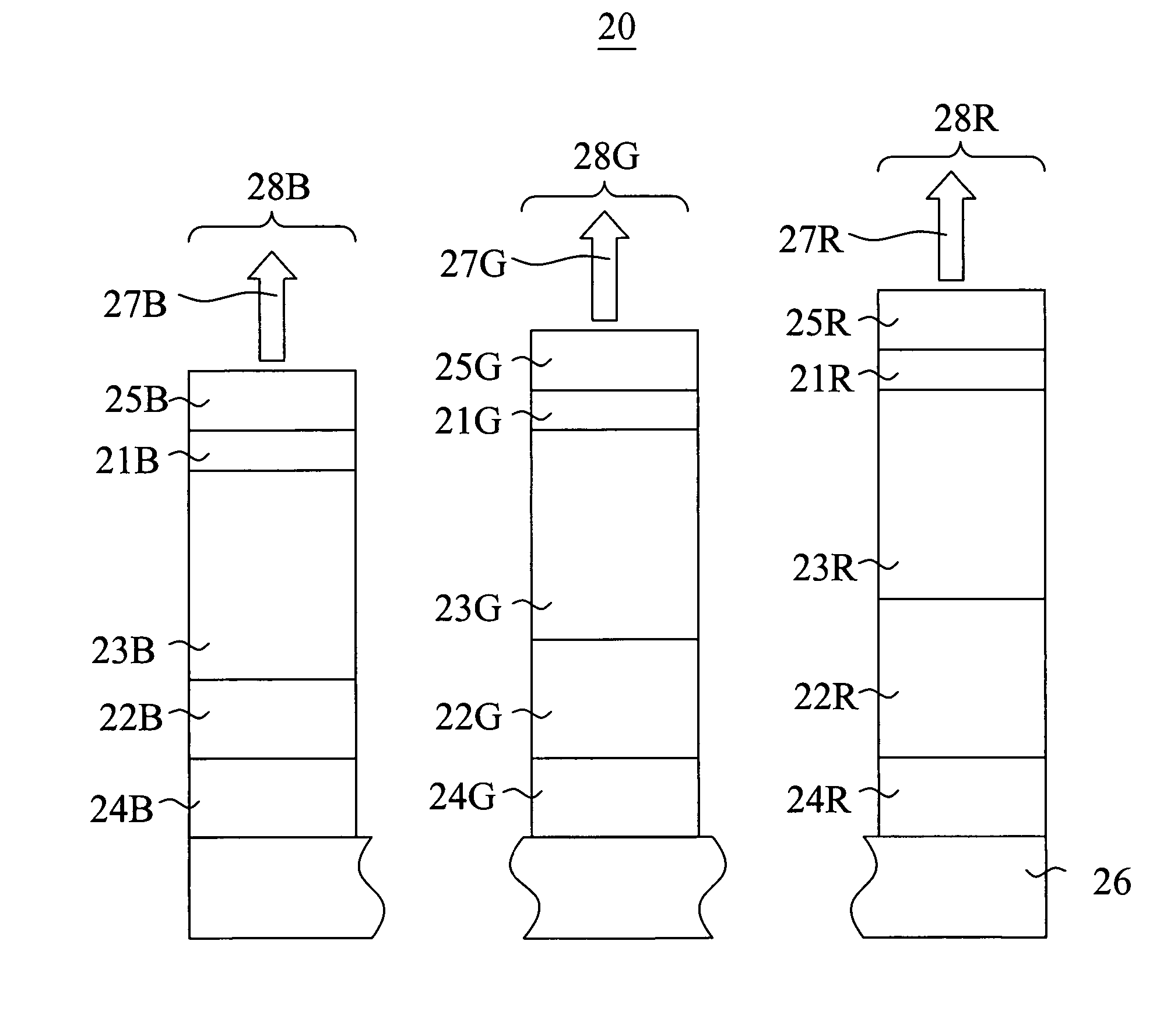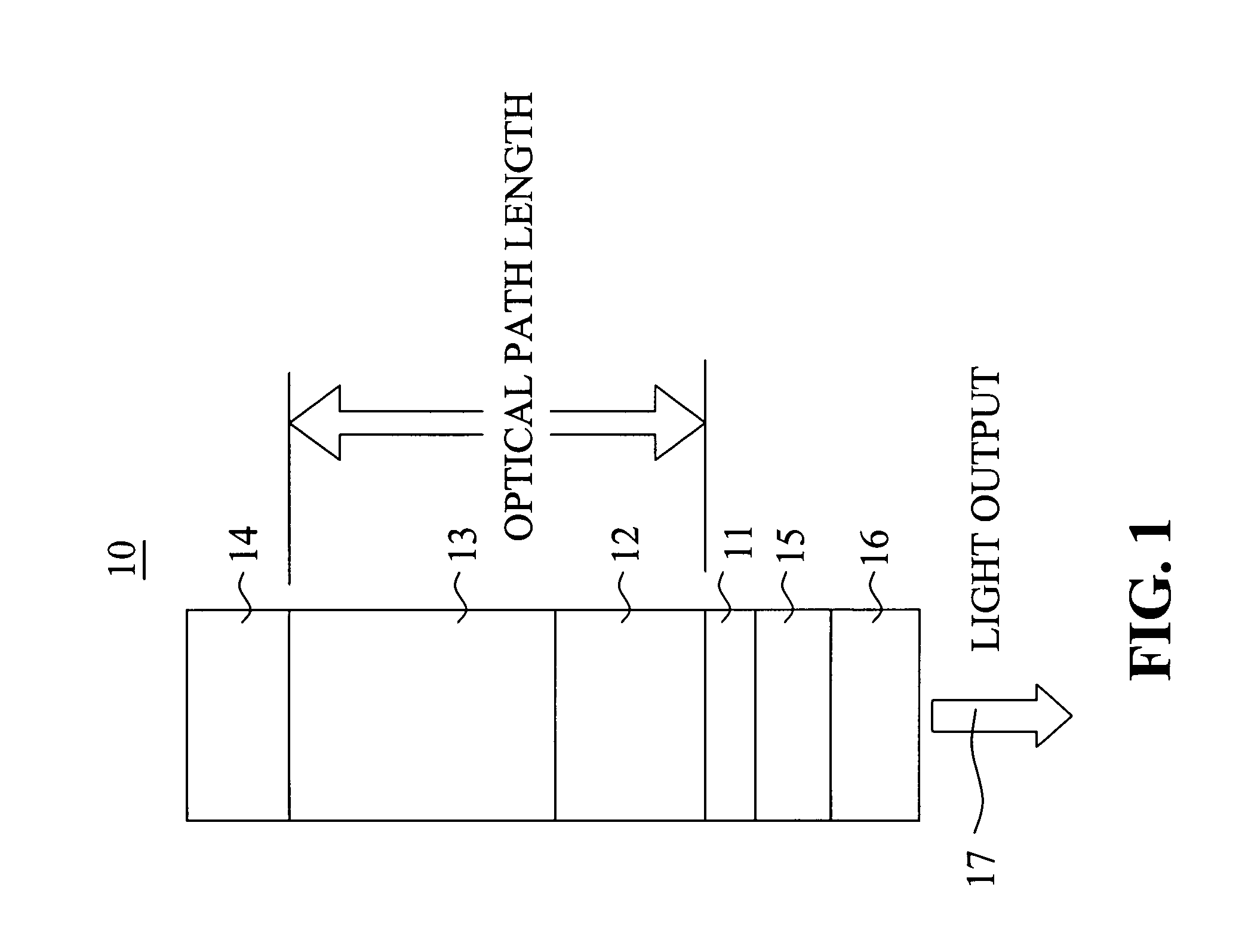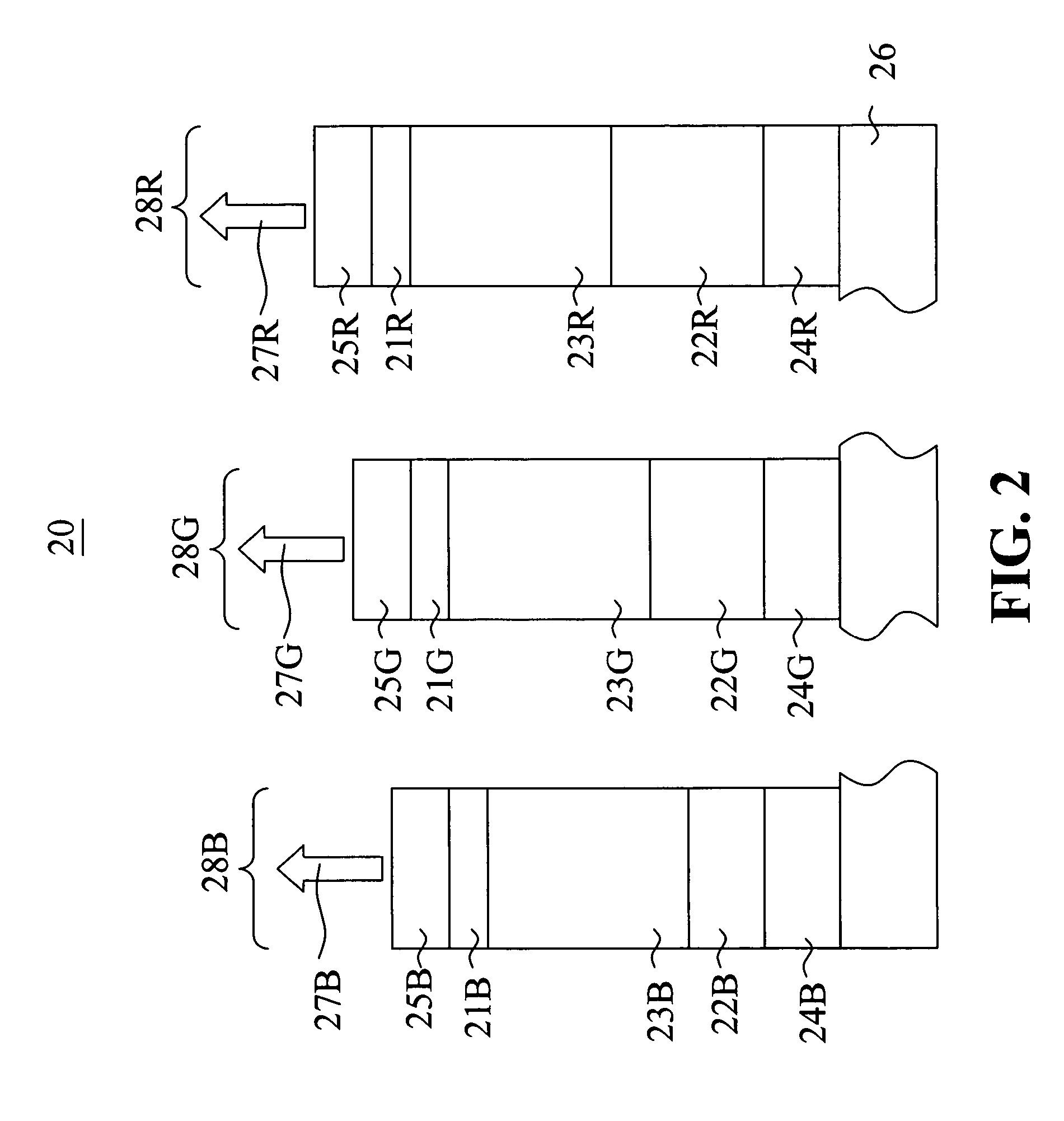Green light-emitting microcavity OLED device using a yellow color filter element
a microcavity and filter element technology, applied in the direction of discharge tube luminescnet screens, natural mineral layered products, etc., can solve the problem of color change of emission, and achieve the effect of reducing the color change when viewed at various angles relative to the substrate and reducing the luminan
- Summary
- Abstract
- Description
- Claims
- Application Information
AI Technical Summary
Benefits of technology
Problems solved by technology
Method used
Image
Examples
example
[0036]The present invention is explained more specifically with reference to the following example.
[0037]A microcavity device (Device 1) was prepared having a configuration as follows: a transparent glass substrate; a 20 nm Ag semitransparent reflector; a 100 nm Al reflector; a plurality of organic layers with a refractive index of approximately 1.8; and no cavity spacer layer. The total thickness of the organic layers was 254 nm. This thickness was selected so as to produce a microcavity structure approximately optimized to enhance emission in the green wavelengths. A filter was not added directly to this device so that the unfiltered emission could be measured. The emission after the filter was then calculated by multiplying (cascading) the known transmission properties a color filter element to the unfiltered emission of the microcavity device.
[0038]FIG. 3 shows the emission properties of the microcavity device (Device 1) without a color filter element at viewing angles of 0 degr...
PUM
| Property | Measurement | Unit |
|---|---|---|
| cut-off wavelength | aaaaa | aaaaa |
| cut-off wavelength | aaaaa | aaaaa |
| cut-off wavelength | aaaaa | aaaaa |
Abstract
Description
Claims
Application Information
 Login to View More
Login to View More - R&D
- Intellectual Property
- Life Sciences
- Materials
- Tech Scout
- Unparalleled Data Quality
- Higher Quality Content
- 60% Fewer Hallucinations
Browse by: Latest US Patents, China's latest patents, Technical Efficacy Thesaurus, Application Domain, Technology Topic, Popular Technical Reports.
© 2025 PatSnap. All rights reserved.Legal|Privacy policy|Modern Slavery Act Transparency Statement|Sitemap|About US| Contact US: help@patsnap.com



